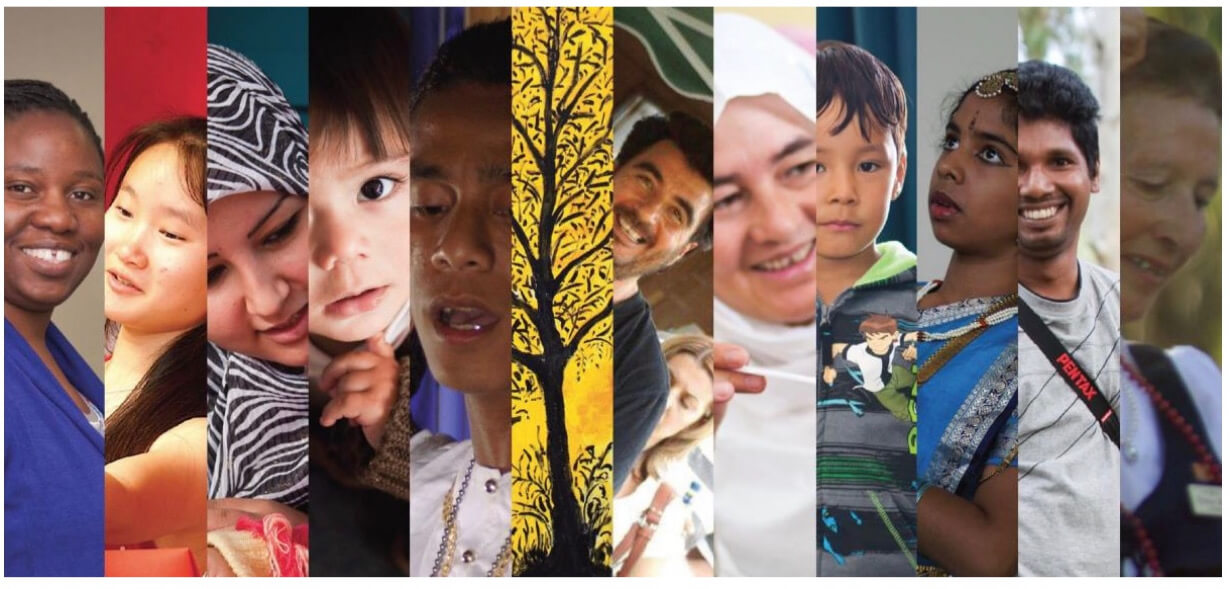SITXCOM007 Show social and cultural sensitivity.
In this unit you will learn how to;
- Communicate with customers and colleagues from diverse backgrounds
- Address cross-cultural misunderstandings
Since the introduction of mass transport by Thomas Cook in the late 19th century the people of the world have taken advantage of this opportunity to move about the globe and as a result our world has become a place of great diversity – a rich cultural tapestry that filters through all aspects of our lives.
It has given us opportunities beyond imaging, increasing our view of the wide world around us and given us a sense of worldliness that prior generations did not have
Communicate with customers and colleagues from diverse backgrounds
An essential component in delivering customer service excellence and a harmonious work-force is the ability to communicate effectively with customers and colleagues. Long term relationships with customers are built on rapport so being able to relate to people from all background and walks of life is an important skill to have. Doing this effectively, however, requires an understanding that diversity extends itself to more than just where a person was born and what religion they follow.
Respecting customers and colleagues from different backgrounds
From a personal point of view, diversity encompasses the many people whose backgrounds, circumstances and abilities are different from your own. This being the case, communication becomes a matter of showing understanding and acceptance of these differences – respecting and allowing others the space and freedom to contribute in their own way.
The value of cultural and social diversity
The hospitality industry is one of constant contact with people from all walks of life and from all corners of the earth. It is an industry of enormous social diversity. No matter which sector of the industry we work in we come into contact with a differing range of people each day. If we do not recognise and accept the social and cultural differences between people we could create disharmony and distrust in the workforce. Furthermore, we risk losing the opportunity for personal growth and the enhancement of the work team.
The value of social and cultural diversity in a business sense is enormous; it can improve the level of teamwork, performance and customer service through a broadened base of knowledge and experience. A diverse workforce is creative and flexible. It exposes customers and colleagues to new ideas, different ways of working and reaching decisions. Learning from customers and colleagues from other backgrounds, also broadens our own personal horizons and expands our own knowledge base, making us more efficient and tolerant as individuals.
What is social diversity?
In order to fully understand and appreciate the value of socially diversity we should first understand the meaning of the terms social and diverse:
The definition of “social” is;
- relating to society: relating to human society and how it is organised
- relating to interaction of people: relating to the way in which people in groups behave and interact
- living in a community: living or preferring to live as part of a community or colony rather than alone
- offering opportunity for interaction: allowing people to meet and interact with others in a friendly way
- relating to human welfare: relating to human welfare and the organised welfare services that a community provides
- of rank in society: relating to or considered appropriate to a rank in society, especially the upper classes
The definition of “diverse” is;
- consisting of different things: made up of many differing parts
- differing from each other: very different or distinct from one another
- socially inclusive: composed of many ethnic, as well as socioeconomic and gender, groups
Sourced from Encarta Dictionary
So the term ‘social’ means the way in which people relate to each other and the situations in which we feel most comfortable. The term ‘diverse’ relates to all the ways in which people are different from one another.
Key aspects of social and cultural groups
In order to be able to interact in the best possible way let us look at these various aspect of diversity.
Cultural background
Culture has many layers — what you see on the surface may only be a small part of the many differences below the surface so generalisations never address the whole story. There is no substitute for building personal relationships, sharing experiences and coming to know others more deeply over time. Culture is also in a constant state of change – as conditions change, cultural groups adapt in sometimes unpredictable ways and no cultural description can ever be put into words about a particular group.
While a person’s race should not be an issue it is an unfortunate fact that it often still is. As we have discussed, in the hospitality and tourism industries you will constantly be working with colleagues, or dealing with customers from other cultures.
Different cultural groups can have a major influence in the local community; in the many different foods available to us; cultural festivals in the area; music, and much more. So people from other cultures and backgrounds have a great deal to offer. By interacting in a positive way, and developing an understanding of them, we can learn about other countries and customs, we can broaden our own outlook on life and increase our personal ‘database’ of knowledge.
…. Continued in learner guide
For more information go to the “hospitality” page.
